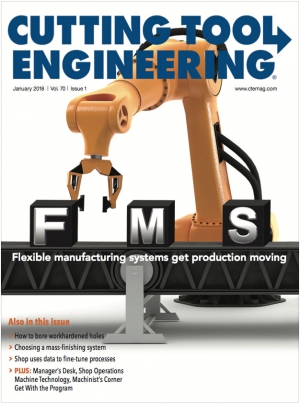To reduce training time and improve worker safety in the high-risk environment of industrial manufacturing, Tobii Pro Insight administers eye-tracking studies.
The Stockholm-headquartered company reported that its research consultants recently conducted an eye-tracking study at the metal foundry of H&H Castings Inc., York, Pa., and the attention-based study revealed unique insights that will contribute to quicker onboarding of workers there, new efficiencies in operations, new training guidelines and a reduced risk of accidents.
The workers who participated in the research wore eye-tracking glasses for 15 to 30 minutes as they completed their tasks, which require extreme concentration. Any break in that concentration could disastrously affect how, say, a worker pours liquid metal into a casting mold, according to Tobii. The glasses provide a close-up enactment of how experienced workers perform these tasks.
![]()
Eye-tracking glasses provide a close-up view of how a process is conducted through the eyes of an experienced worker. Image courtesy of Tobii Pro Insight.
Trainees view recorded high-definition video from the workers’ point of view for instruction purposes, said Mike Bartels, senior research director for Tobii Pro Insight, North America.
“Overlaid on top of that is an indicator of where they are looking throughout the task,” he said. “So you have this red dot bouncing around their point of view, showing exactly where they’re looking.”
Analysis of the attention data reveals steps a manufacturer can take to make a process safer and more efficient. Depending on the type of company and job being performed, Bartels said the analysis primarily involves reviewing the attention footage and developing visualizations and attention metrics based on the data generated.
He added that a manufacturer can also use the data quantitatively to test all its workers on the production floor and compare the amount of attention they pay to specific factors as they complete their work. At the foundry, for example, when workers spilled molten aluminum, their heads were often moving, indicating they weren’t hyperfocused on the target of the pour.
The eye-tracking methodology can also be applied to a job shop because machining tasks involve elements of skilled craftsmanship and physical hazards.
“It is a methodology that can be broadly applied to any type of professional task,” Bartels said, adding that Tobii Pro has used the technology with surgeons in an operating room and computer operators in an office. “Any task where it is critical to [pay close] attention, this technology has and can be applied.”
In addition to the visual information provided, Bartels said eye-tracking studies frequently include a retrospective think-aloud interview in which a participant narrates what is occurring during each task.
“It’s a powerful glimpse into your cognitive process while you complete a task,” he said.
Two methods are available to conduct an eye-tracking study, Bartels explained. A Tobii Pro service team can bring the eye-tracking equipment, set up the participating workers, collect and analyze the data, and prepare a report. Companies can also purchase the hardware and software and conduct their own tests and analyses.
“Today’s eye-tracking systems fit on like a regular pair of glasses,” Bartels said. “It takes about 30 seconds to set up, and you are off on your way and ready to perform the task.”



 ARTICLES
ARTICLES


